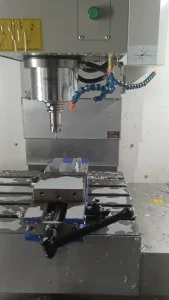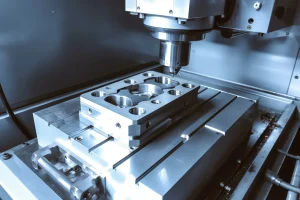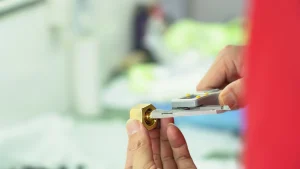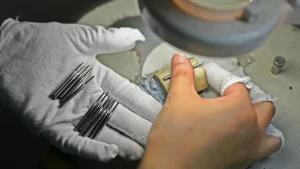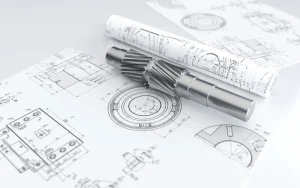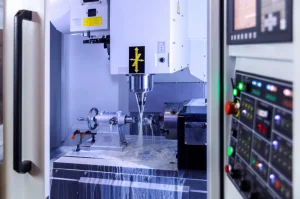CNC加工和3D打印到底有什么区别?
一般来说, 3D打印是一种增材技术, while CNC machining is a subtractive one.
Regarding materials, the main materials supported by 3D printing include liquid resin (SLA), metal powder (可持续发展管理), nylon powder (SLS), gypsum powder (full-color printing), filament (直接制造), sandstone powder (full-color printing), and sheet metal (LOM).
CNC machining typically uses mostly sheet metal. The length, 宽度, and height of the connected components, along with the corresponding losses, are measured, and the sheet metal is cut to the appropriate dimensions for processing.
1. 3数码印花
现在, there are five mainstream metal 3D printing technologies:
nanoparticle jet metal forming (NPJ), selective laser sintering (SLS), laser cladding (LMD), selective laser melting (可持续发展管理), and electron beam melting (EBM).
1.1 Nanoparticle Jet Metal Forming (NPJ)
While conventional metal 3D printing uses laser melting and sintering of metal powder particles, nanoparticle jet metal forming (NPJ) utilizes a liquid state rather than a powder.
These metals are then melted and sintered in a single, integrated process. The metal is encased in a tube and inserted into a 3D printer.
During metal 3D printing, “molten iron” containing metal nanoparticles is sprayed into the part. This allows for the use of heated water for metal printing, resulting in a more rounded model.
This also enables the use of conventional inkjet printers.
打印完成后, the build chamber heats up to evaporate the excess liquid, leaving only the metal.
1.2 选择性激光烧结 (SLS)
The SLS process consists of a powder cylinder and a build cylinder.
The cylinder piston rises, and a powder trolley evenly distributes powder onto the build cylinder.
A computer controls the two-dimensional scanning trajectory of the laser beam based on the circular slice pattern, selectively sintering the solid powder material to form a layer of the part.
After each layer is completed, the working piston descends. When the thickness is thick, the powder laying system applies new powder, and the laser beam is controlled to scan and sinter a new layer.
This cycle continues, 一层又一层, until the three-dimensional part is formed.
1.3 Laser Cladding (LMD)
This technology has many names, and different research institutions have independently studied and named it.
Common names include DLF, LENS, DMD, and LRF.
The main difference from SLM is that powder is collected by a nozzle onto the work surface, where it converges with the laser to a point.
The powder melts and cools, resulting in a cladding solid.
1.4 Selective Laser Melting (可持续发展管理)
The basic principle of selective laser melting is to design a 3D solid model of the part using computer-based modeling software such as Pro/E, CATIA, or UG.
The 3D model is then sliced using software.
The mold is sliced and layered to obtain contour data for each cross-section.
This contour data then generates a fill scan path.
The machine then controls the laser beam to selectively melt each layer of metal powder material according to these fill scan lines, gradually forming the three-dimensional metal part.
Before the laser beam begins scanning, the powder spreading device pushes the metal powder flat onto the base plate of the build cylinder.
The laser beam then selectively melts the powder on the base plate according to the fill scan lines of the current layer.
The build cylinder then descends a certain distance, and the powder cylinder ascends a certain distance.
The powder spreading device then spreads metal powder on the processed layer, and the machine loads the contour data for the next layer for processing.
This process repeats layer by layer until the entire part is completed.
1.5 Electron Beam Melting (EBM)
The process is very similar to SLM.
The main difference is that EBM uses an electron beam as its energy source.
The electron beam output energy of EBM is typically an order of magnitude greater than the laser output power of SLM, and the scanning speed is also much higher.
所以, during the EBM build process, the entire modeling table must be preheated to prevent excessive temperatures during the molding process, which can cause significant residual stress.
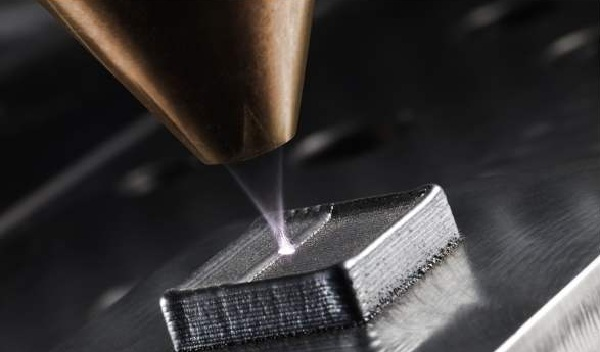
2. CNC Machining Centers
CNC machining centers evolved from CNC milling machines, combining all the functions and processing characteristics of CNC milling machines.
They share the same structure and process similarities.
此外, CNC machining centers integrate the processing functions and processes of multiple machine tools, enabling them to complete multiple machining processes — such as milling, 无聊的, 窃听, 钻孔, and more — in a single setup.
CNC machining centers can be classified into the following categories:
- Based on the relative position of the spindle and worktable;
- Based on the machining process;
- Based on the number of controlled axes;
- Based on the tool change method in the CNC machining center’s tool magazine;
- Based on the number of worktables;
- Based on the machining accuracy of the CNC machining center.
3. Post-processing of 3D Printing and CNC Machining
CNC machined parts have a wide range of post-processing options, including painting, 磨削, deburring, silk screen printing, 电镀, pad printing, laser engraving, metal oxidation, 和沙蓝色.
Post-processing of 3D printed parts is relatively simple, typically involving grinding, deburring, 绘画, and dyeing.
4. Comparison Between 3D Printing and CNC Precision Machining Processes
- Programming:
3D printing comes with built-in driver software that automatically calculates printing time and required consumables, while CNC machining requires professional programmers and machine operators. - 处理时间:
3D printing is a one-shot process, so it takes less time. CNC precision machining takes longer than 3D printing. - 处理数量:
3D printing can print multiple parts at a time as long as there are enough pallets, without the need for manual supervision.
CNC machining centers can generally only process one part at a time. - Processing Accuracy and Success Rate:
3D printing has higher accuracy and a higher printing success rate.
While human error or poor fixtures can lead to machining failures in CNC machining centers, CNC machining centers offer significantly better precision than 3D printing. - Process Complexity:
3D printing can process parts with relatively complex curved surfaces and special-shaped structures, achieving a single-shot finish.
CNC machining can process even more complex curved surfaces and special-shaped parts, but requires multiple programming and disassembly processes. - Product Practicality:
3D-printed products have drawbacks such as low strength and wear resistance, while products produced by CNC machining centers offer advantages such as high strength and wear resistance.
结论
The above are the differences between CNC machining and 3D printing.
I hope this helps.
快速效果
RapidEfficient specializes in high-precision CNC machining with 18 多年的经验.
它的产品覆盖医疗, 通讯, 光学, 无人机, 智能机器人, 汽车, 和办公自动化零件.
The company’s CNC machining centers include 四轴, 五轴, 和连锁机床 and are equipped with precision projectors, 三坐标测量机, 光谱仪, 和其他精确测试设备.
The machining accuracy can achieve 0.01毫米, and the testing accuracy can achieve 0.001毫米.

